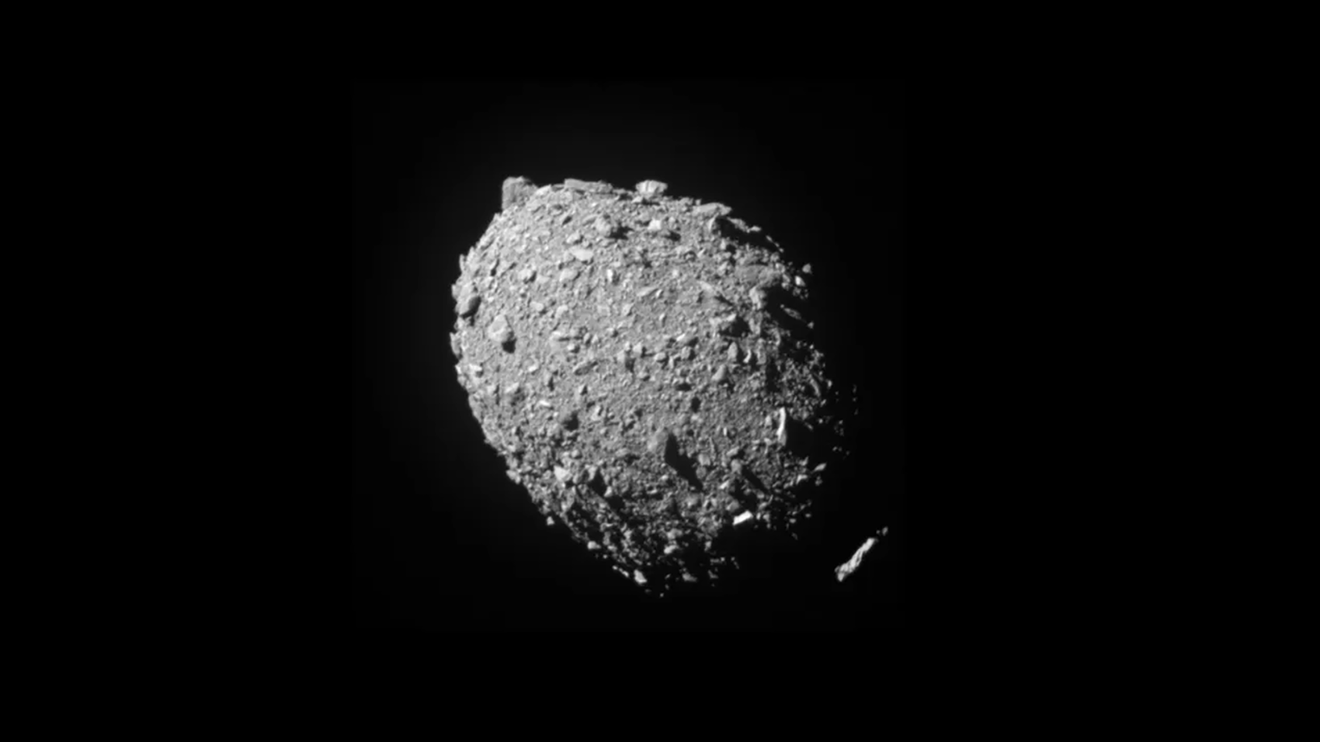NASA's DART impact changed entire shape of asteroid and shrunk its orbit

NASA’s DART(Double Asteroid Redirection Test), the world's first planetary defense test, deliberately smashed into an asteroid on Sept. 26, 2022, demonstrating a technique known as kinetic impact to alter an asteroid's trajectory in space. Now a new study shows the impact changed not only the motion but also the shape of the target asteroid.
DART targeted Dimorphos, a 560-foot-wide (170-meter-wide) asteroid moonlet that orbits a larger, 2,560-foot (780-meter) near-Earth asteroid called Didymos.
Before the DART impact, Dimorphos had a roughly symmetrical "oblate spheroid" shape, akin to a squashed ball. However, following the impact, it took on a more elongated shape, like a watermelon.
"When DART made impact, things got very interesting. Dimorphos’ orbit is no longer circular: Its orbital period - the time it takes to complete a single orbit – “is now 33 minutes and 15 seconds shorter. And the entire shape of the asteroid has changed, from a relatively symmetrical object to a 'triaxial ellipsoid' - something more like an oblong watermelon," said Shantanu Naidu, a navigation engineer at NASA's Jet Propulsion Laboratory in Southern California, who led the study.
The team behind this discovery used three data sources to deduce what had happened to the asteroid after impact.
- The first source were the images captured by the DART spacecraft as it approached the asteroid and sent them back to Earth via NASA's Deep Space Network (DSN).
- The second data source was the DSN's Goldstone Solar System Radar in California, which bounced radio waves off both asteroids to precisely measure the position and velocity of Dimorphos relative to Didymos after impact. Radar observations quickly helped NASA conclude that DART's effect on the asteroid greatly exceeded the minimum expectations.
- The third and most significant data source were the ground telescopes worldwide that measured both asteroids' light curve or how the sunlight reflecting off the asteroids' surfaces changed over time. The researchers could learn how DART altered Dimorphos' motion by comparing the light curves before and after impact.
Their computer models also calculated how Dimorphos' orbital period evolved following NASA's DART impact. The analysis revealed that the impact not only altered its shape, but also reduced its orbital period by 33 minutes and 15 seconds. This shift brought the asteroid approximately 120 feet (37 meters) closer to Didymos.
Looks like DART left its mark on asteroid Dimorphos in more ways than one. 🛰️💥Recent findings from a JPL-led study show that the impact of @NASA’s historic Double Asteroid Redirection Test changed the entire shape of the asteroid and shrunk its orbit. https://t.co/rPprteza0S pic.twitter.com/ece2bsVN0w
— NASA JPL (@NASAJPL) March 19, 2024
- READ MORE ON:
- NASA DART impact
- DART asteroid collision
- NASA
- asteroids










